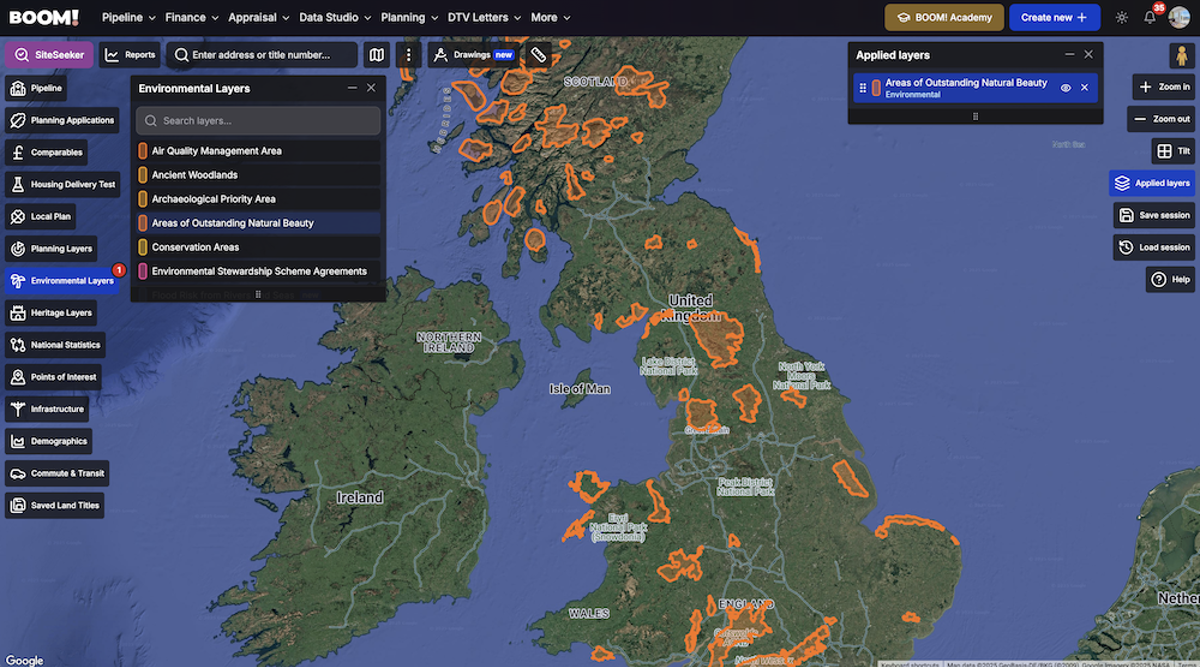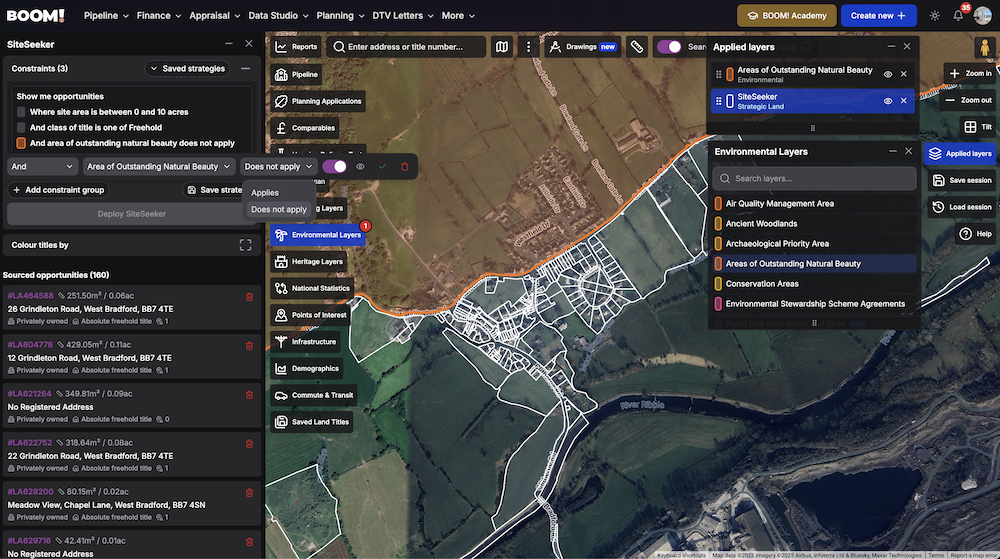Areas of Outstanding Natural Beauty (AONB) 101: The Ultimate 2025 Guide for Property Developers







Beware the “Scenic” Trap: You spot a gorgeous plot of land with panoramic views, a real bargain. You’re picturing luxury homes or a quaint holiday development. But a few months and thousands in, the council slams your planning application with a big “NO.” The culprit? Four letters you hadn’t considered: AONB. If you’ve never heard of Areas of Outstanding Natural Beauty, you’re not alone – yet this silent factor can make or break your project. Let’s pull back the curtain on AONBs so you don’t lose time or money on the wrong site. (Spoiler: by the end of this quick guide, you’ll know exactly how to turn this insider knowledge into your competitive edge.)
What Exactly Is an AONB (And Why Should You Care)?
An Area of Outstanding Natural Beauty (AONB) is not just a pretty place – it’s a legally protected landscape designated to conserve its special character. Think of rolling hills, dramatic coastlines, and historic villages that are so beautiful the government steps in to keep them that way. There are 46 AONBs across the UK, covering about 14% of England, Wales and Northern Ireland. These aren’t all remote wilderness, either. Even popular regions like the Cotswolds and Surrey Hills are AONBs, peppered with villages and small towns. In fact, 66% of people in England live within 30 minutes of an AONB – perhaps without even knowing it!
Why does this matter to you as a developer or land sourcer? Because AONB status is like a big red flag saying “handle with care.” The UK’s planning rules give these areas the highest level of protection for natural beauty – on par with National Parks. Local authorities must prioritise conserving the landscape in any development decision. In late 2023 the government even rebranded AONBs as “National Landscapes” to underscore their importance. Name change or not, the message is clear: building in these areas is possible but highly restricted.
A typical English AONB landscape (Lincolnshire Wolds) showcases rolling countryside protected for its scenic beauty.
AONB Rules: The Hidden Roadblocks for Developers
Here’s the bottom line – ignore AONBs at your peril. If your target site lies in an Area of Outstanding Natural Beauty, you’re playing on hard mode. By law, councils will scrutinise your plans with extra intensity. Major developments (like a new housing estate or commercial project) are usually a non-starter in AONBs unless you can prove “exceptional circumstances” and a public interest case. That’s a high bar (think critical infrastructure or affordable housing need) – not your average project. Even smaller builds and home extensions face tighter limits. For example, certain permitted development rights (those nifty no-planning-needed upgrades) are curtailed in AONBs. You might not get to add that huge rear extension or trendy cladding by default if it could spoil the area’s character. Many newbies assume AONB status means “absolutely no development.” Not true! You can still make improvements – folks in AONBs do build conservatories, convert barns, etc. – but every step is more controlled. The goal is simple: keep the “Outstanding Natural Beauty” part intact.
Translation: If you buy land in an AONB, expect more paperwork, more scrutiny, and longer timelines. The council may require detailed landscape assessments, design tweaks, and extra justification. Local community groups (who fiercely love their scenic backyards) might object. This doesn’t mean you should never consider an AONB site – but you must go in with eyes open and a solid game plan.
Stay Ahead: How to Turn AONB Knowledge into Your Edge

So, how do savvy land sourcers and budding developers use this information? By making AONB checks a routine part of site sourcing. Before you fall in love with that lovely acreage, pause and do the following:
Check the Status Early: Is the land inside an AONB or right next to one? (Development near an AONB can also trigger objections if it affects the view). You can find AONB maps on BOOM! to flag protected areas. Never skip this step – catching an AONB designation late can cost you dearly in wasted bids or plans.
Understand the Implications: If it is in an AONB, use BOOM! to research the local planning history. Has the council approved anything similar nearby, or do they routinely reject projects? Know that any proposal must conserve or enhance the landscape by law. Align your ideas accordingly (think low-impact, high-quality design, using local materials, etc.). If your concept can be framed as helping the community or environment, even better.
Leverage Data Tools: Don’t worry – you don’t have to manually cross-reference council maps all night. Modern PropTech platforms such as BOOM! aggregate all this data for you. Our platform already includes every AONB boundary and relevant dataset, so with a quick search you’ll see instantly if a site is in a protected zone. In seconds, you filter out land that’s a non-starter, saving months of headaches. Knowledge that used to feel “insider” is now at your fingertips – use it.
Be Strategic (Not Scared): An AONB doesn’t have to be a deal-breaker if you have a strategy. Maybe that plot is cheap because it’s in a protected area – you could landbank it, or pursue a smaller-scale project (like glamping or eco-tourism) that aligns with the AONB’s ethos. Or you simply move on to a more straightforward site, confident you dodged a bullet. The key is you’re in control, not flying blind.
Empowerment Over Hype: By now, AONBs have gone from obscure acronym to concrete factor in your playbook. You’ve learned how these “secret” beautiful places are guarded by UK planning rules – and how to work with that reality. The next time you’re evaluating a prospective development site, you’ll spot the AONB issue before it spots you. While others are caught off-guard by surprise restrictions, you’ll be negotiating and designing with full awareness. In a competitive market, this is how you get an edge: fewer nasty surprises, smarter bids, and faster action on the right opportunities.
Consider this your new rule: Scenic views are amazing – but always check the fine print. We built our site-sourcing platform to make checks like this dead simple (AONBs, green belt, flood zones – BOOM! data-driven due diligence). Armed with these insights, you can chase those picturesque deals without falling into the trap. Now get out there and find that profitable site – nothing will catch you off guard now!
To find out how BOOM! can help book in a call with our team.